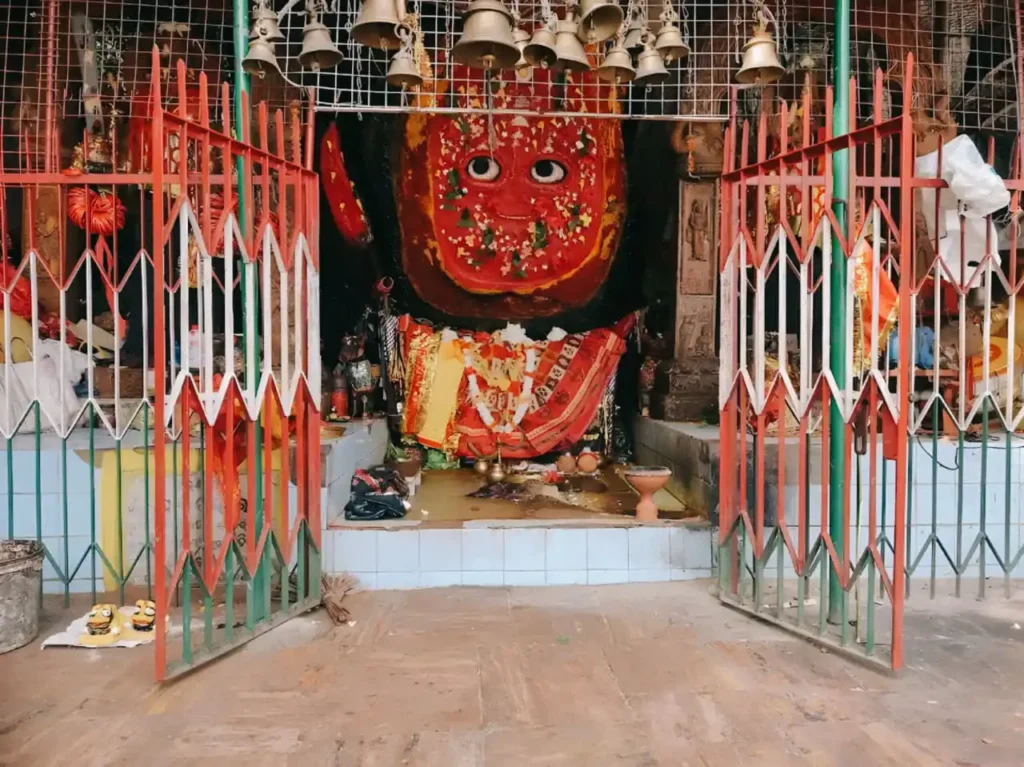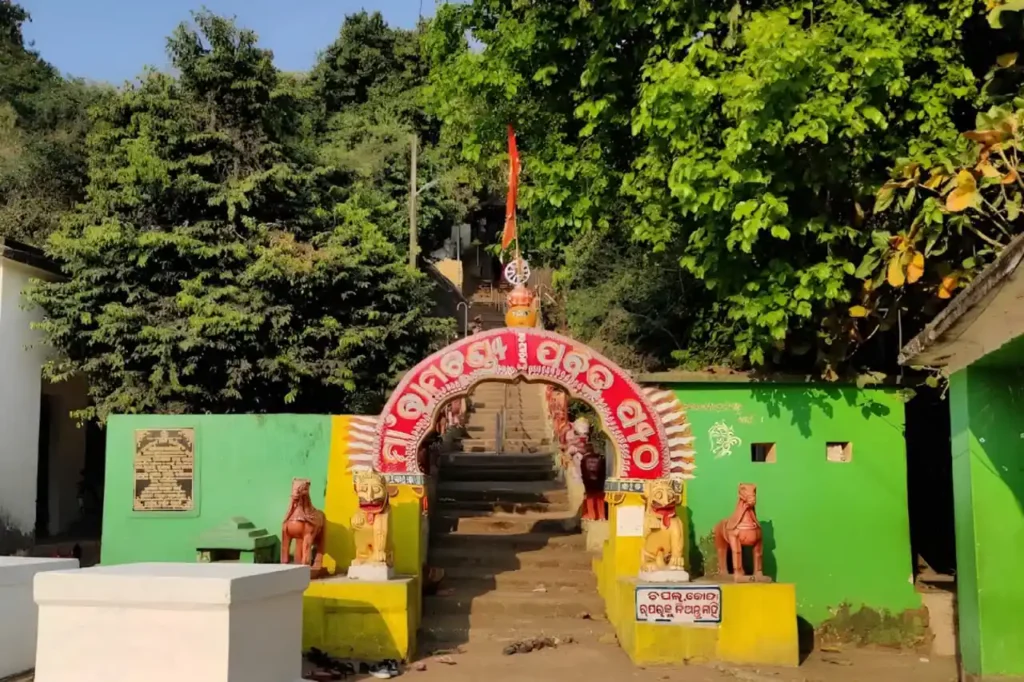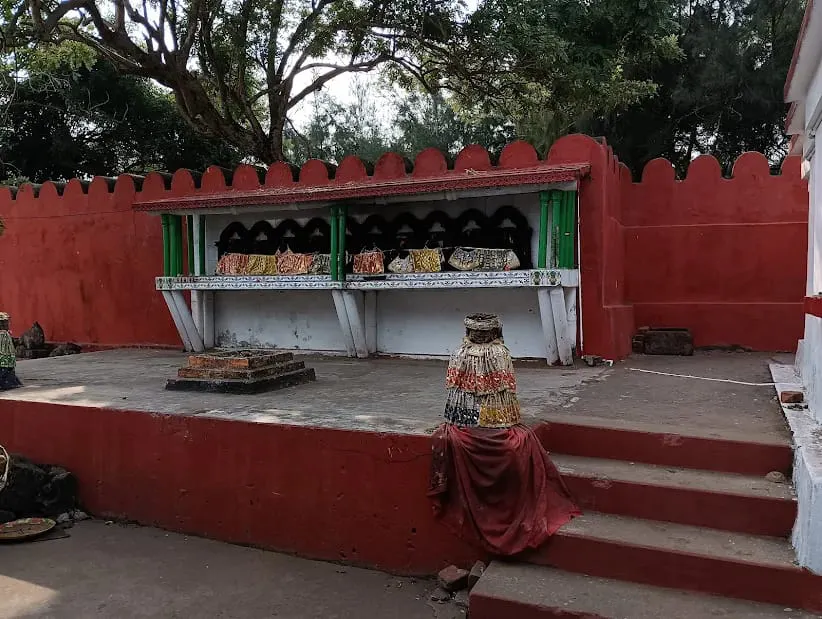
Table of Contents
Introduction: Where Divinity Meets Nature in Odisha
Nestled atop a serene hill near Bhubaneswar lies a spiritual treasure that remains relatively untouched by mass tourism — the Ramchandi Temple at Gadamanatri. This is no ordinary temple. Here, Maa Ramchandi, the fierce yet benevolent goddess, emerges naturally from the earth, commanding devotion and reverence in a form rarely seen elsewhere in India.
Whether you’re a seeker of divine blessings or a traveler in search of mystic legends, Ramchandi Temple offers a blend of spirituality, folklore, nature, and tradition that will leave you awestruck.
Where is Ramchandi Temple Located?

The Ramchandi Temple is situated in Gadamanatri village, about 46 kilometers from Bhubaneswar, Odisha’s capital. The site is connected by a fair-weather metal road and lies in an area historically known for its brave Paik warriors.
Surrounded by mango groves and cornfields, and flanked by another hill known as Gobardhan Thali, the Ramchandi hill offers about 80 steps leading to the goddess’s abode.The Unique Deity: Maa Ramchandi in Her Natural Form
One of the most astonishing aspects of Maa Ramchandi Temple is that the deity is not carved or installed but has emerged naturally from the earth in the form of a tall, solid black granite rock — believed to be over 100 feet in height.
Unlike traditional temples, there is no sanctum structure here. Instead, a representative mobile idol, called chalanti pratima, is worshipped inside a small temple in the village. Worship of the main deity atop the hill is managed by hereditary tribal priests, known as Jani.
Rituals and Daily Worship Practices
- First, bathing the deity
- Then, dressing with Kala Kachheni (black robes)
- Next, applying Sindur (vermilion), Haladi (turmeric), and Chua (black fragrant liquid)
- Finally, offering Bhog and chanting sacred mantras
Legends of Ramchandi: Folktales that Echo Divine Power
The Tale of the Growing Goddess and the Tamarind Tree
Once, as Maa Ramchandi emerged from the earth, a tamarind tree nearby began to grow even taller. In response, the goddess also grew rapidly, overtaking the tree’s height. But this frustrated the Jani priest, who couldn’t reach her forehead for the rituals. In a moment of irritation, he slapped the goddess and asked her to stop growing.
To his amazement, she obeyed, matching her height with that of the tree — and has remained so ever since.The Tiger Who Became a Plough Bull
In another tale from the Ramchandi Temple, Maa Ramchandi’s pet tiger killed the priest’s bull. Distraught, the Jani stopped performing rituals. That night, the goddess appeared in his dream, assuring him that her tiger would plough his fields in place of the lost bull. The next morning, the tiger was waiting in the field and helped plough the land alongside a bull — calmly and obediently.
These folk legends not only inspire awe but reflect the deep bond between the deity and her devotees at Ramchandi Temple.Festivals and Celebrations: Rituals That Stir the Soul
Maha Saptami
- Massive animal sacrifices of goats, fowls, and sheep take place.
- Meanwhile, a Kalasi (a human medium of the goddess), usually a tribal man, becomes possessed after drinking wine and dances with a sword.
- After that, dressed in black robes, adorned with vermilion and garlands, he visits every home, accepting offerings.
Maha Ashtami and Dashahara
- To begin with, more animal sacrifices continue.
- In addition, Paik and Khandayat communities observe sword worship (Khanda Puja).
- Meanwhile, performers demonstrate traditional combat skills like swordplay, wrestling, and archery.
Admittedly, these rituals may feel intense to outsiders, but to locals, they are sacred, community-driven events where the goddess’s energy flows through every participant.
Historical & Cultural Importance of Ramchandi Temple Gadamanatri

While the Ramchandi Temple lacks documented architectural grandeur, its spiritual significance is unmatched. Indeed, the very land, stories, and rituals breathe life into this sacred site, making it one of Odisha’s most culturally vibrant Shakti shrines.
Moreover, from tribal worship traditions to royal patronage by the Gajapati rulers, the Ramchandi Temple weaves together tribal, folk, and mainstream Hindu beliefs in a seamless spiritual fabric.People Also Ask
1. Where is the Ramchandi Temple located?
2. What is unique about the Ramchandi Temple deity?
3. Who performs the rituals at Ramchandi Temple?
4. What legends are associated with Maa Ramchandi?
5. When is the best time to visit Ramchandi Temple?
Final Thoughts: Why You Should Visit Ramchandi Temple at Least Once
Ramchandi Temple at Gadamanatri is not just a destination — instead, it’s an experience where mythology, tribal devotion, fierce rituals, and divine presence converge. Furthermore, it remains a spiritual sanctuary untouched by commercialism, still revered by the Paik descendants and local villagers.
If you wish to see how divine energy flows beyond temples and idols — into hills, legends, dreams, and tribal hearts — then this is your place.
Pingback: Jhoti Chita – Traditional Wall Art of Odisha | Rituals & Heritage
Pingback: Chandipur Beach: A Magical Seaside Experience in Odisha
Pingback: Ganapati Ganesh in Odisha – History & Ganesh Puja 2025 Guide
Pingback: Raibania Fort Odisha – Unravel the Historical Marvel of Balasore
Pingback: Sapta Matrikas – Seven Divine Mothers & Their Temples in Odisha
Pingback: Mahalaya Rituals in Odisha
Pingback: Debrigarh 2025: Wildlife Sanctuary Odisha, Safaris & Nature Camp